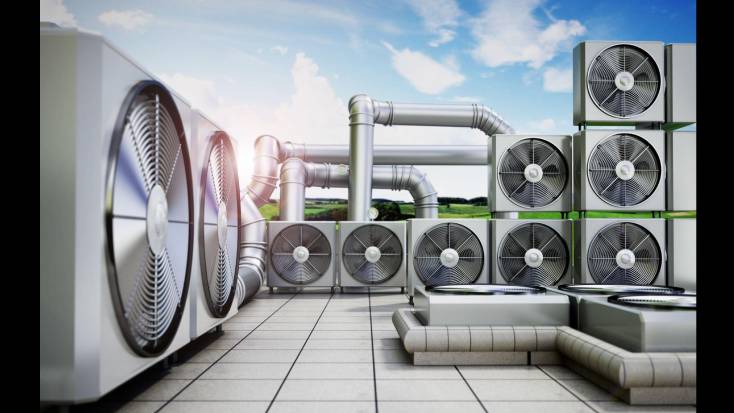Table of Contents
Introduction
An adiabatic cooling system takes the lead in the variance between the dry bulb temperature and the wet bulb temperature of the air. This difference can fluctuate in practice between 0 and 9 °C, subject to the relative humidity of the air and the atmospheric pressure.
Additionally, It is a water cooling system using closed-circuit ambient air, which combines a radiator, axial fans for forced air convection, an adiabatic system for pre-cooling during hot weather, and a monitoring device for system management.
Adiabatic Cooling Methods:
From the perspective of cooling systems, adiabatic cooling characteristically relies on the evaporation of water to cool the air instead of using traditional refrigerants or mechanical cooling methods.
- Evaporative Cooling: This process is where air passes through water-saturated media, such as wet pads or screens. As air flows over this wet surface, it picks up moisture through evaporation.
- Heat Transfer: The energy required for evaporation is taken from the air itself, which decreases the air temperature. This process cools the air without the need for energy-intensive mechanical refrigeration.
- Humidity Control: Adding moisture to the air during the cooling process can increase the relative humidity, making it effective in scorched climates.
Types of Adiabatic Cooling Systems:
ACS can be of three known types:
- Direct Adiabatic Cooling: This process is known as the wet-bulb cooling system. Water is straightly evaporated into a stream of heat to facilitate its cooling. DAC is the most widely working adiabatic cooling technique worldwide.
- Indirect Adiabatic Cooling: This system utilizes two individual air streams. In one stream, air typically passes through a heat exchanger. In the other stream, dry air cools the initial air stream without adding moisture. This process is more valuable for locations with high humidity, as it provides cooling without increasing humidity levels.
- Two-stage Adiabatic Cooling: A two-stage cooling process combines elements of both direct & indirect evaporative cooling methods. Connecting both direct and indirect cooling phases allows speedy cooling to even lower temperatures than using either technique alone. Correspondingly, two-stage cooling is an energy-efficient, cost-saving, and environmentally friendly substitute to other stand-alone adiabatic cooling techniques.
Benefits of ACS:
- Energy Efficiency: They consume considerably less energy than traditional air conditioning systems, making them more environment-friendly and cost-effective.
- Eco-Friendly: ACS uses water as a cooling medium, making it more eco-sustainable and free from harmful refrigerants.
- Suitable for Dry Climates: They are predominantly effective in dry and low-humidity environments.
Challenges of ACS:
- Water Usage: ACS requires a consistent source of water for their operation, which can be a worry in water-scarce regions.
- Maintenance: The wet media requires regular maintenance & replacement to prevent bacterial growth and ensure efficient cooling.
Conclusion:
In conclusion, adiabatic cooling systems represent a resourceful and energy-efficient approach to cooling, which has found applications in various sectors. These systems serve evaporative cooling ideologies to reduce air temperature while adding minimal humidity, making them particularly effective in hot and dry climates.
From direct and indirect evaporative cooling for HVAC systems to spot coolers and industrial cooling towers, adiabatic cooling solutions offer eco-friendly and cost-effective alternatives to traditional air conditioning.
Comprehensively, they significantly mitigate energy consumption, enhance sustainability, and improve indoor and industrial environments. As the world pursues more efficient and environmentally mindful cooling methods, adiabatic cooling systems continue to gain a reputation in both residential & industrial settings.

